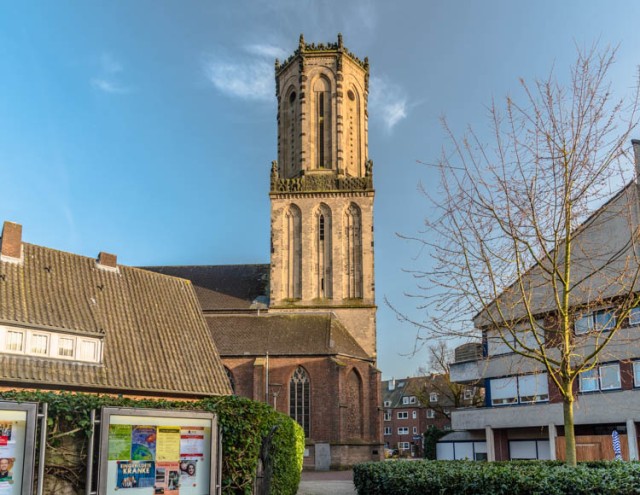
Difficult to photograph close in due to its dense inner-city site, some say that St Aldegundis is on the site of the original mission church in what later became Emmerich am Rhein, founded by St Wilibrord around 700. That is debatable, but what is certain was there was a collegiate foundation in the town by 914 and that a church on this site burnt down in the early 15th Century. The current building was built to replace it between 1449 and 1514.
It has many lovely late medieval statues, photographed and described below…
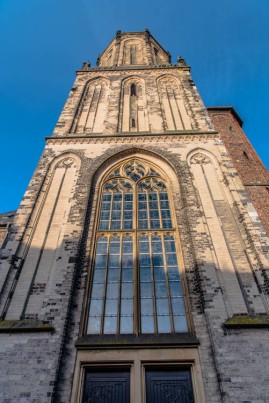
The tower was originally built, integral to the nave, between 1483 and 1513. It was destroyed in a 1651 fire and not rebuilt until 1719; the church was bombed out in the RAF bombing of 7 October 1944 in which 91% of the buildings in the town were destroyed. Restoration of the nave and choir were finished by 1955 with the tower, whose upper section was substantially lost, following between 1959-67, with the figures on today’s tower carved by Waldemar Kuhn. New stained glass was also commissioned to replace what was damaged in the war.
The church has long been the principal parish church of Emmerich although perhaps inevitably these days it has now been merged with three others in the town (including St Martini) into a single parish.
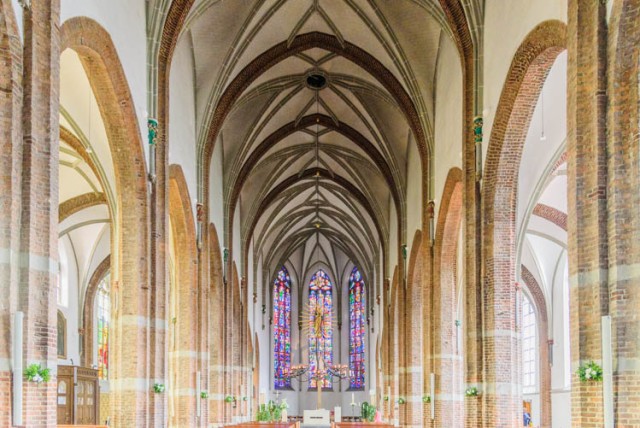
The ornate chandelier with Our Lady is typical for the region. This example was executed around 1490 by famous local woodcarver, Dries Holthuys. The candelabra dates from 1963.
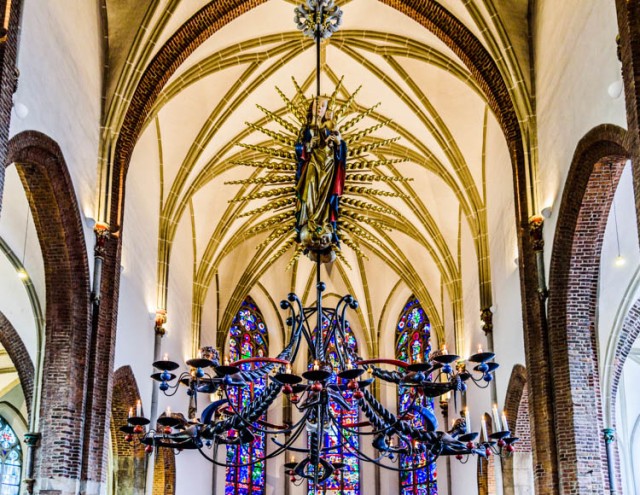
In the east end is Walter Benner’s 1956 stained glass.
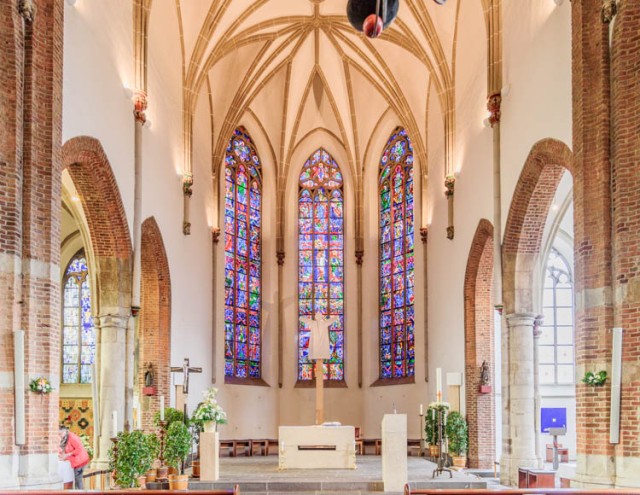
On the left, saints with a connection with the Lower Rhineland (some direct, some fairly tenuous!): Norbert of Xanten, Therese of Lisieux, Thomas a Kempis, Peter Canisius, Hildegard of Bingen, Albertus Magnus, Benedict, Augustine, Francis, Pius X, Aldegonde, Gregory the Great.
In the centre, Christ as judge of the world, the Resurrection, Mary and John under the Cross, the Last Supper. Then below an angel before the gates of the Israelites, the Passover Meal, the Paschal Lamb, Abraham’s sacrifice, Adam and Eve, Moses and the Burning Bush, the expulsion from the Garden of Eden.
On the right more saints and others with a Lower Rhineland connection: Gerhard Storm (curate martyred by the Nazis), Johannes Otten (parish priest executed for treason during the Thirty Years War), Kardinal von Galen (another prominent Catholic opponent of the Nazis), Jesus on the Mount of Olives, Willibord, Boniface, Ludger First Bishop of Münster, Nicholas, Victor, Martin, Paul, Peter, Matthew.
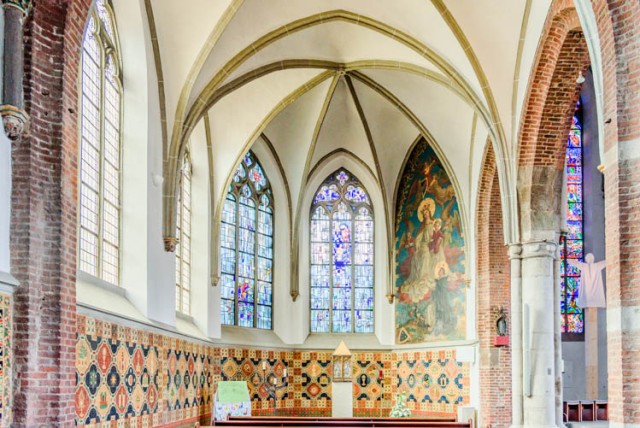
The Polygon, or north aisle chapel. The mural on the right was painted by Friedrich Stummel in 1888 and shows a Dominican paying homage to Our Lady, and was painted in memory of the foundation of the Confraternity of the Rosary.
The stained glass was executed by Johanna Fröhlich in 1965. On the left, The Three Wise Men following the star, on the right The Nativity.
And now for those late medieval statues…
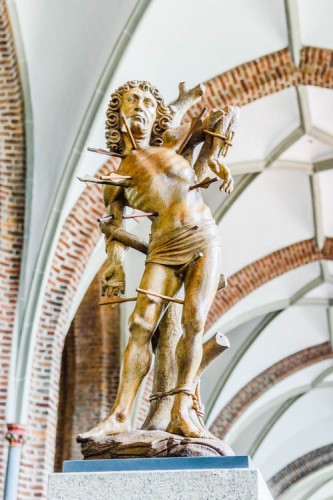 |
A statue of St Sebastian dating to around 1480. |
| St Christopher executed around 1500 by someone in the artistic circle of famous local woodworker Dries Holthuys. | 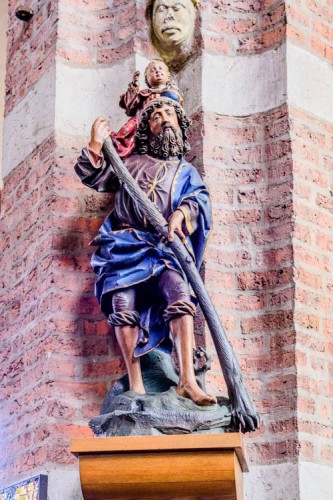 |
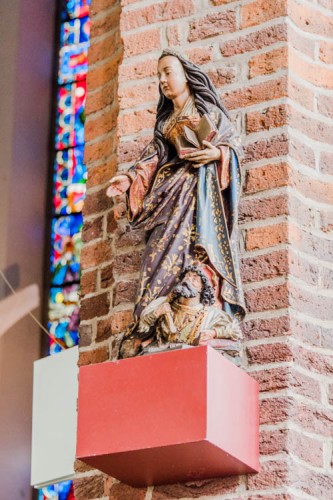 |
St Katharine from around 1510-20. This is one of two late medieval statues of St Katharine in the church. |
| And the other is this… St Katharine, in the west end of the church, dating to the 1470s. | 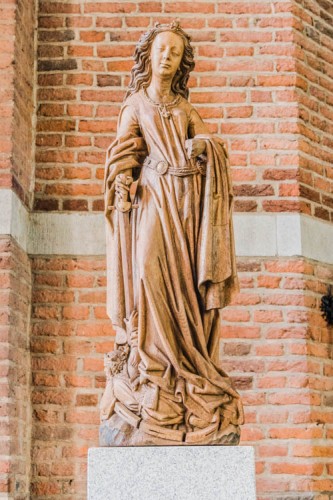 |
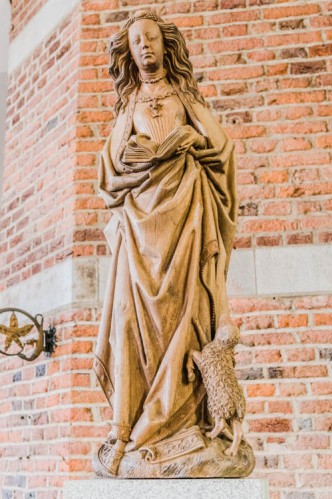 |
And here is St Anges in virtually identical style, also dating to the 1470s. |
| St Aldegundis, usually known in English as St Aldegonde, was a Frankish Benedictine abbess at Maubeuge who lived ~639-684 and is still venerated in northern France. She was known for feeding the destitute, and for dying of breast cancer, of whose sufferers she is the patron saint. | 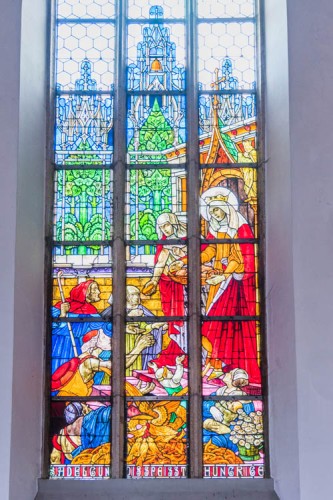 |
A window of the patron of the church feeding the poor, executed around 1920 by an unknown artist.
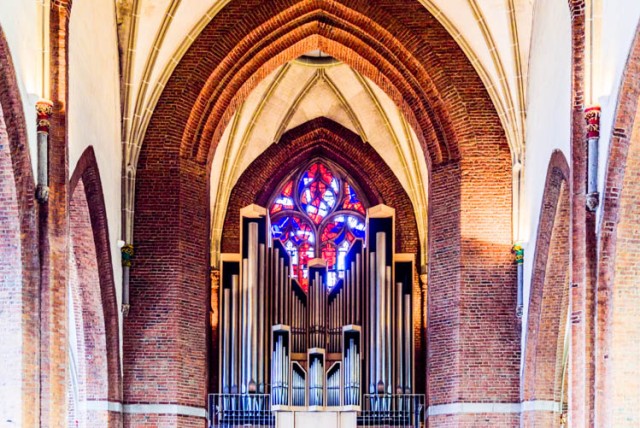 The three-manual organ was built in 1973 by the firm Romanus Seifert and Son and was expanded in 1997. The window behind is an abstract composition by
The three-manual organ was built in 1973 by the firm Romanus Seifert and Son and was expanded in 1997. The window behind is an abstract composition by
Joachim Klos dating to 1962.
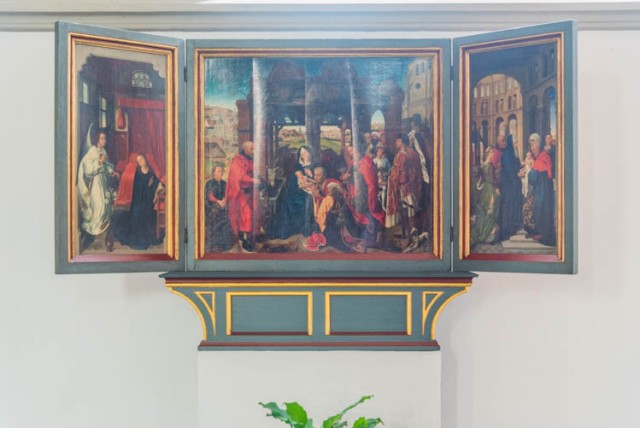
A triptych in the south aisle painted around 1900 by H Lamers after a template of 15th Century Flemish master Rogier van der Weyden. It shows the Annunciation, the veneration of the Three Wise Men and the Presentation of Christ in the Temple.
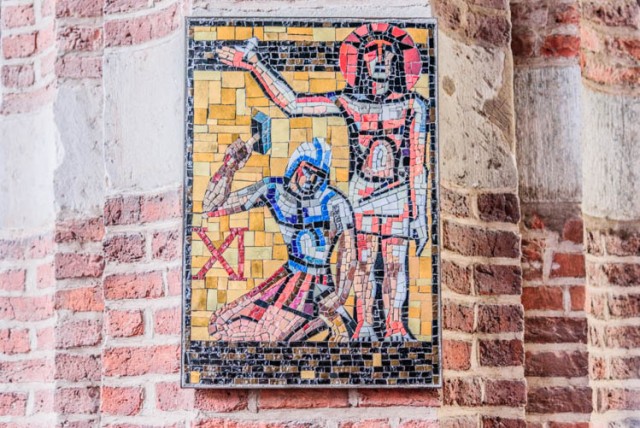
Part of a set of modern stations of the cross. I have no other information.
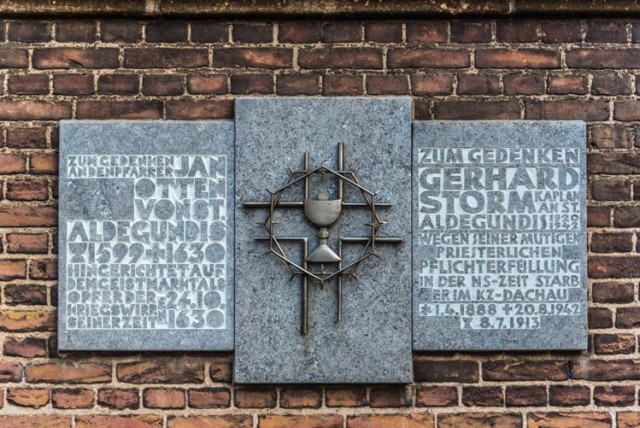
Plaque on the north wall of St Aldegundis, Emmerich am Rhein, commemorating two priests from the church who died martyrs’ deaths centuries apart.
Gerhard Storm, was a curate at the church and working as a hospital chaplain when a sermon he preached on 11 January 1942 described the state structures as rotten, subject to collapse and ultimately God’s judgement. This resulted in the Gestapo calling him in for questioning. He was eventually arrested in May, was transferred to the priests’ barracks at Dachau by July, where he died of a lung ailment on 20 August.
Jan Otten was parish priest during the Thirty Years War, and was accused of treason resulting in him being beheaded in the market square on 24 October 1630.
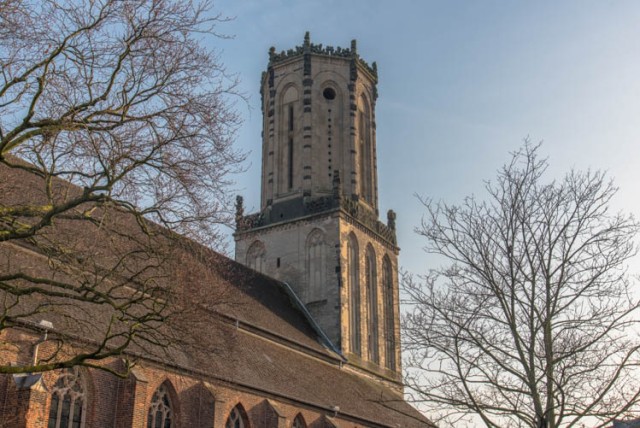
The tower from the north east, on a gorgeous, nearly equinoctal, evening.






Are the church records available to find out about earlier resident ancestors in Emmerich?